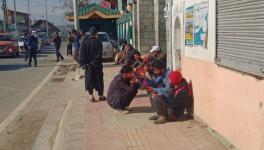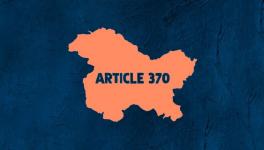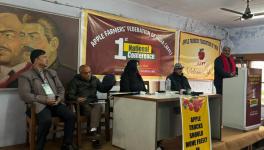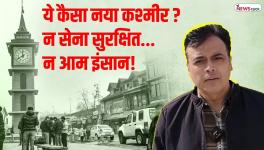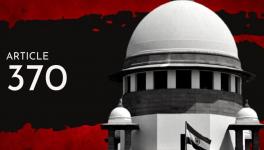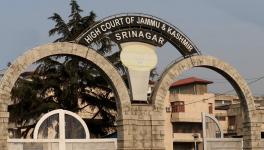Kashmir: No Easing of Restrictions
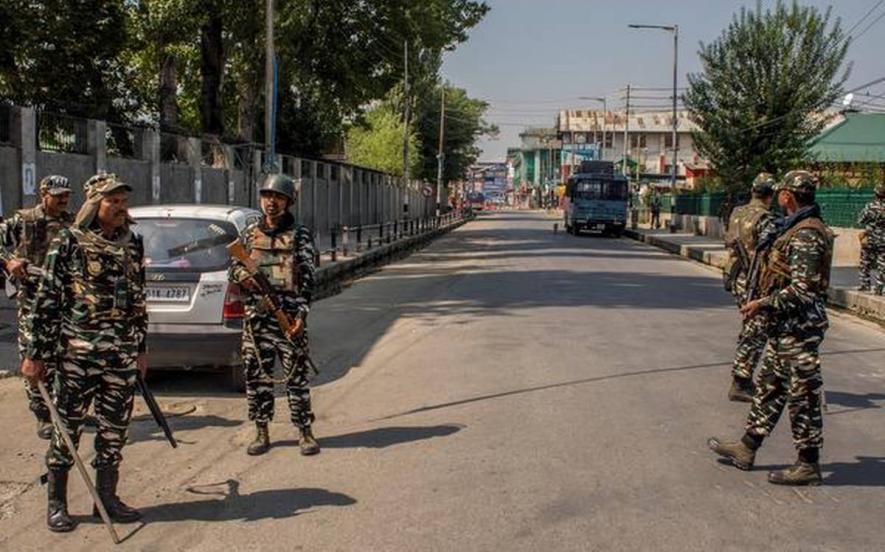
Image Courtesy: The Hindu
Otto von Bismarck is credited with saying that “people never lie so much as after a hunt, during a war, and before an election”. So when the National Security Advisor (NSA) said that lifting of restrictions over Jammu and Kashmir (J&K) are linked to how Pakistan “behaves”, it left many confused. Why was the NSA relating responsibility for developments in Kashmir, which the Indian government claims as being India’s domestic matter, to Pakistan? It was even more intriguing because a 9.5 lakh-strong force is deployed in Kashmir to control around 80 lakh Kashmiris, communication remains locked down, thousands have been detained, and there has been no perceptible increase in armed militancy.
If despite all this Pakistan remains so powerful that it can control developments in Kashmir, and energise a movement, then the government implicitly acknowledges Pakistan as a key player. Or, was the NSA preparing the Indian public for a long haul in Kashmir, with slim chances of restrictions ending anytime soon because the ground situation remains precarious as people refuse to fall in line?
Just before the NSA held his press conference for select journalists, the Union Home Minister had told a delegation of “panchas” from J&K that restrictions will remain for another 20-25 days. Now the NSA says that restrictions will remain for as long as they are needed. The NSA not only linked the lifting of restrictions in Kashmir to Pakistan’s ‘behaviour’, but also the release of detainees to when conditions turn “conducive”. This is too vague and imprecise to clear doubts. At the same time, Indian diplomats have been churning out statistics to convince the world that restrictions are being eased and that 92% of the region is free from encumbrances.
The other side of the picture is that within the country, the government and its camp followers are trying to monopolise the narrative on Kashmir and shut out critics. In Delhi, the capital of India, it is becoming difficult to organise a meeting in public halls, universities, colleges etc, where views critical of government’s handling of the Kashmir dispute are voiced. The organisers will not just have the Crime Branch of Delhi Police breathing down their necks, but also face Hindutva members who will promptly begin their protest and hall-managers will summarily cancel their booking.
What is strange is that a strong government which faces virtually no political opposition, has a bulk of the media at its beck and call, which enjoys the unstinting support of the bureaucracy and armed forces, and which can as well get the judiciary to bend to its will in the name of “national security”, exhibits immense nervousness.
Union Information and Broadcasting Minister Prakash Javadekar, speaking at a Community Radio award function on 29 August, pointed out that the “biggest punishment” is “when people are not able to contact anyone, when they are not able to talk to anyone, and when you do not have any tool to communicate”. These are powerful words and what he said was unexceptional. But he issued a clarification lest his words were used to describe the actual conditions existing in Kashmir, which his words fit to a ‘t’.
According to annual report of the department of telecommunications in the ministry of communications for 2018-19 in entire Jammu and Kashmir there were just 102,447 landlines, of these 23,000 were in Kashmir valley. As against this there are 11,334,786 wireless phones. So a gradual opening of landlines, which had all but disappeared in J&K, is an insignificant development when the main lifeline of communication were the 11 million-plus mobile phones across J&K.
India’s foreign minister claimed that all communications had to be shut down to prevent “communication between the terrorists and their masters” and insisted that Indian authorities know of no other way to disrupt such links but to snap them for everyone. The governor of J&K claimed that restrictions were necessary to prevent civilian casualties because the internet is a handy tool for “anti-national elements” and added that the internet helps “Pakistan to mobilise and indoctrinate”. The head of the Army’s Northern Command insists that the last 30 days have been the calmest in Kashmir with virtually no casualties thanks to the restrictions imposed including communication shutdown.
That lives may have been lost due to severe restrictions on the movement of people as well as due to lack of communication to seek or get help for medical emergencies, or for inadequate supply of medicines and life supporting drugs, apparently do not count. Such deaths are not spectacular enough for authorities to bother about much and in any case plausible deniability offers a way out. If this does not work then facts can be misreported.
At a recently held press conference in Srinagar by the General Officer Commanding-in-Chief (Army Commander) of the Northern Command, accompanied by Munir Khan, the Additional Director-General of Police (ADGP) of J&K, it was claimed that one Asrar Ahmad, a student of Class 11, died due to injuries he sustained during stone-pelting. The ADGP is reported as saying that there was “no shelling, no pellet injuries. He was hit by a stone.” However, it has been reported that he was brought to Sher-i-Kashmir Medical School at Saura at 6.46 PM on 6 August and that his X-Ray showed that he had sustained multiple pellet injuries on his skull and eye socket.
The Army commander, at the same press conference, spoke about Pakistan’s attempts to infiltrate militants and highlighted the arrest of two alleged Lashkar-i-Toiba fighters and that all militant “launching pads” are “full and infiltration is being made every day”. However, he hastened to add that these attempts are being “foiled” and that not “a single attempt had been successful” since 5 August. Yet, the NSA argues that Pakistan is trying to stoke violence and that 230 militants are waiting across the Line of Control (LoC).
The interesting thing is that a picture of “calm” is being painted in equal proportion to making claims that Pakistan is pushing “infiltration” in. The question is that if not a single infiltration bid has succeeded, not a single bullet has been fired and the situation remains “calm”, then why this paranoia about Pakistan? To officials, the credit for “calm” is related to clampdown in Kashmir. However, if one looks closely, violence appears one-sided, mostly being employed by the government.
The clampdown affects everyone in Kashmir. It is true that there have been three incidents of militants attacking local traders (at Parimpora in Srinagar and Sopore) and two nomads. However, if communication blackout did not prevent such incidents, then it appears to be a more localised act than part of a larger design.
As for the charge of “indoctrination”, the curious fact is that authorities make sweeping statements without providing the public any evidence. How many persons were involved in such messaging? What was the nature of the content? Why punish every Kashmiri for activities of some? Unless, the unstated message is that every Kashmiri is a suspect or has already been indoctrinated? If this be the case then Indian authorities are admitting that Kashmiris are not with India. And, in that sense, by denying them access to communication a reverse form of indoctrination is being enforced where they are supposed to learn about this new form of captivity and control dictated by New Delhi.
So, scaling up repression is a mark of failure and not success and far from being a master-stroke. Kashmiris have been living in a “disturbed” area for three decades, where Indian armed forces rule the roost and are backed by a despotic police system to maintain “peace”, that is, follow what the authorities demand of people. Having failed to achieve their objectives, authorities have decided to inflict collective punishment on the Kashmiris. This may make the wounds fester far longer as shared suffering unites the people.
A month and more of communication shutdown is a strong reminder of the government’s vulnerability rather than its strength. It is one thing to keep one’s own people fooled, since they are sort of captive audience today. But, to advance vacuous arguments in interactions with leaders and opinion-makers of foreign countries belittles the Indian government itself, for making antiquated arguments drawn from a dark past.
If the surface “calm” is the result of violently putting Kashmiris ‘in their place’, then how long will the captivity of Kashmiris carry on for? The big trouble for the government is waiting around the corner. They ought to ponder over the fact that despite snapping of all communications inside Kashmir and encumbrances placed on movements, people are responding to the challenges by taking recourse to passive resistance across Kashmir. This remarkable consensus should worry the authorities because it signals that even without an organisation and when they have been left leaderless, the mood remains defiant. Indeed, the communication lock-down and restrictions evidence the fact that the popular response to defy restrictions through passive resistance is driven by people’s own volition and not by something being choreographed from outside.
It seems that every day passing day brings closer the day when communication will have to be restored because continuing with the ban is going to whittle down the value of Indian arguments on world forums.
The writer’s views are personal.
Get the latest reports & analysis with people's perspective on Protests, movements & deep analytical videos, discussions of the current affairs in your Telegram app. Subscribe to NewsClick's Telegram channel & get Real-Time updates on stories, as they get published on our website.











